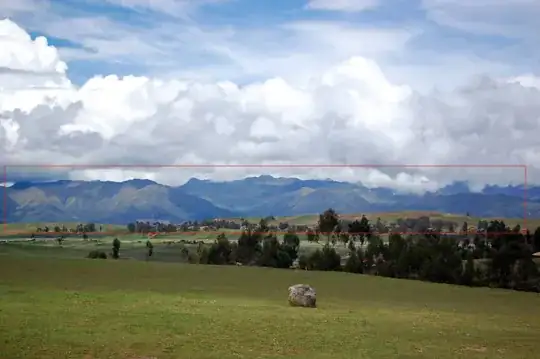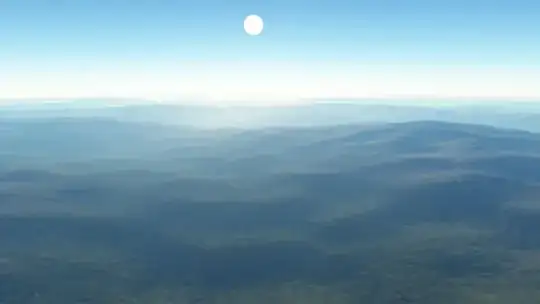What is the name of effect, that we see on far objects in outdoors ? These objects are low-contrast, foggy ? Is it only fog or some scattering ? 
- 31
- 1
3 Answers
In computer graphics the effect is called "atmospheric scattering", that's sun light scattering from atoms and other particles in the atmosphere. In modern computer games atmospheric scattering is commonly modelled with Bruneton sky model by Eric Bruneton and is most prevalent in the clear sky due to long view distances, but also visible for distant objects on ground as you have observed.
Atmospheric scattering in Bruneton model is composed of Mie scattering and Rayleigh scattering. Mie scattering is mostly wavelength independent strongly anisotropic scattering from particles that are quite a bit larger than the wavelength of light (water droplets & pollution in the atmosphere). Mie scattering results in effects like halo around the sun.
Rayleigh scattering on the other hand is wavelength dependent scattering from atoms in the atmosphere whose size is close to the visible light wavelength range. Rayleigh scattering is responsible of effects such as the blueish sky at noon and blueish tint of objects in the distance.
- 3,636
- 13
- 14
Do you mean haze?
FWIW, in Australia the Blue Mountains get their name from the release of oil into the atmosphere from the eucalypts.
- 4,241
- 12
- 30
As Simon F says, the meterological phenomenon that causes this is haze. A physicist would call it an example of scattering, but the visual effect is known as aerial perspective. Reproducing this in paintings has been a technique since the 15th Century, with Leonardo da Vinci one of the early proponents.
Since your question included a nice real-world example, here's a computer graphics example, courtesy of Dave Pape (CC-by) from a slide deck of techniques for showing depth:

- 6,780
- 1
- 16
- 35
-
My understanding is "haze" refers more to scattering due to water droplets or other small particles in the air, not the blue (Rayleigh scattering) effect from the air itself. – Nathan Reed Apr 28 '17 at 16:34
-
1Meteorologically speaking, haze is specifically water, not other particles, so yes, there are multiple causes leading to the real-world effect. That's part of why it looks different in different situations, and why you hear so many words in connection with it. – Dan Hulme Apr 28 '17 at 16:46
